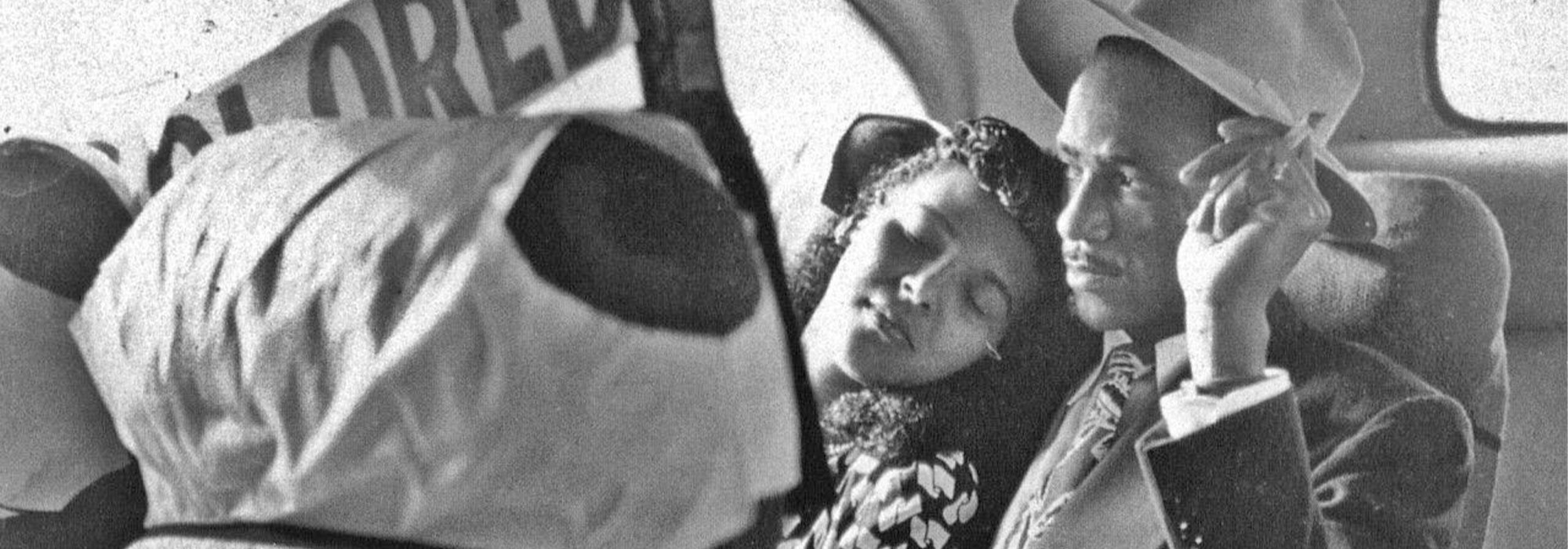It Takes One: Robert Louis Brandon Edwards
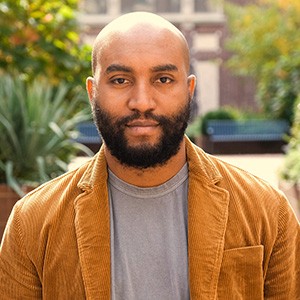
Robert Louis Brandon Edwards is an artist, historian, and preservationist. His work focuses on the experiences of Black mobility in America and its relationship to place. He received a Bachelor of Architecture from the State University of New York and a Master of Architectural History with a Certificate in Historic Preservation from the University of Virginia. He is currently a PhD student in Historic Preservation at Columbia University, a Scholar-in-Residence at Voices Underground, and a Fellow of both Widen the Circle and Society of Architectural Historians.
How do you define a cultural landscape?
A cultural landscape, to me, is the historical relationship between land and people. Whether it is how a person or a group of people responds to, uses, or occupies a particular land, both rural and urban. Cultural landscapes can include the tangible and intangible; from the corner bodega to woodlands and waterways; from the past to the present.
Your work often explores the relationship between African American cultural lifeways and their modes of transport, particularly automobiles and buses. What have you learned from this specific thematic research focus?
Black Americans have had to be mobile since day one and those moments of mobility, what I refer to as the “in-between time” (moving from one site to the next through physical landscapes) is a critical segment of the Black experience. The study of buildings and sites only captures a fragment of the Black experience.
In Black Mobility: Ford Bronco Steering Wheel (2023), an installation at the Graduate School of Architecture, Planning and Preservation at Columbia University, I displayed a steering wheel and asked viewers to think about its symbolism and meaning in today’s American landscape.
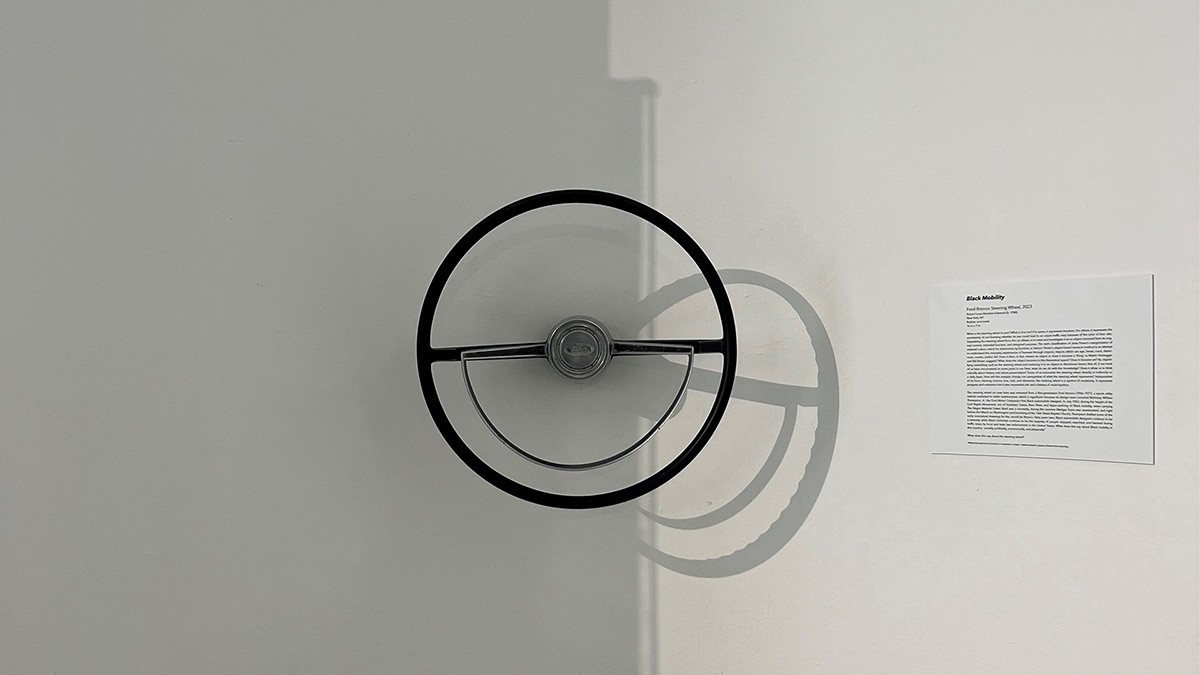
For some, the steering wheel represents freedom, independence, and maybe even status (depending on the brand of automobile), but for others, it represents the uncertainty of not knowing whether its use could lead to an unjust traffic stop because of the color of their skin. Separating the steering wheel from the car allowed viewers to investigate it as an object or device removed from its original context, intended function, and designed purpose. This method, of course, was a reference to Marcel Duchamp and Theaster Gates’ use of the readymade, and Jules Prown’s research of material culture in order to understand the everyday experiences of humans through objects; objects which can age, break, crack, deteriorate, evolve, and even fail.
The steering wheel that I chose to display was removed from a first-generation Ford Bronco (1966-1977), a sports utility vehicle that was marketed to white outdoorsmen, but designed by a team including the Ford Motor Company’s first Black automobile designer, McKinley William Thompson, Jr. In July of 1963, during the height of the Civil Rights Movement, the era of Jim Crow segregation, and Sundown Towns, Race Riots, and hyper-policing of Black mobility, when carrying The Negro Motorist Green Book was a necessity; the summer Medgar Evers was killed, and just months before the March on Washington and bombing of the 16th Street Baptist Church in Birmingham, Thompson drafted some of the early conceptual drawings for what would become the Bronco. Over 60 years later, Black automobile designers continue to be a minority while Black motorists continue to be the majority of people stopped, searched, harmed, and even killed during traffic stops by police in the United States. What does this say about Black mobility in this country? What does this say about its cultural, social, and physical landscape?
As part of your research, you are currently rehabilitating a 1947 Greyhound Bus. Why is doing this important to you and what do you hope to do when the work is complete?
My grandmother fled the overt-racialized Southern landscape of Fredericksburg, Virginia for better opportunities in the more covert-racialized urban landscape of Harlem, New York during the Great Migration. She did so by Greyhound bus and from the same Greyhound bus station that the Freedom Riders visited in 1961. Collective memory often reduces the Black experience with the bus to three events: Rosa Parks in 1955, the Montgomery Bus Boycott from 1955 to 1956, and the Freedom Rides of 1961. Books and films often depict Black mobility during the eras of Jim Crow and the Great Migration within the context of railroads and automobiles. However, my research focuses on the everyday experiences of regular Black people on Greyhound buses who did not have access to the railroad and could not afford a car, during these moments in the “in-between", moving from one site to the next through physical landscapes.
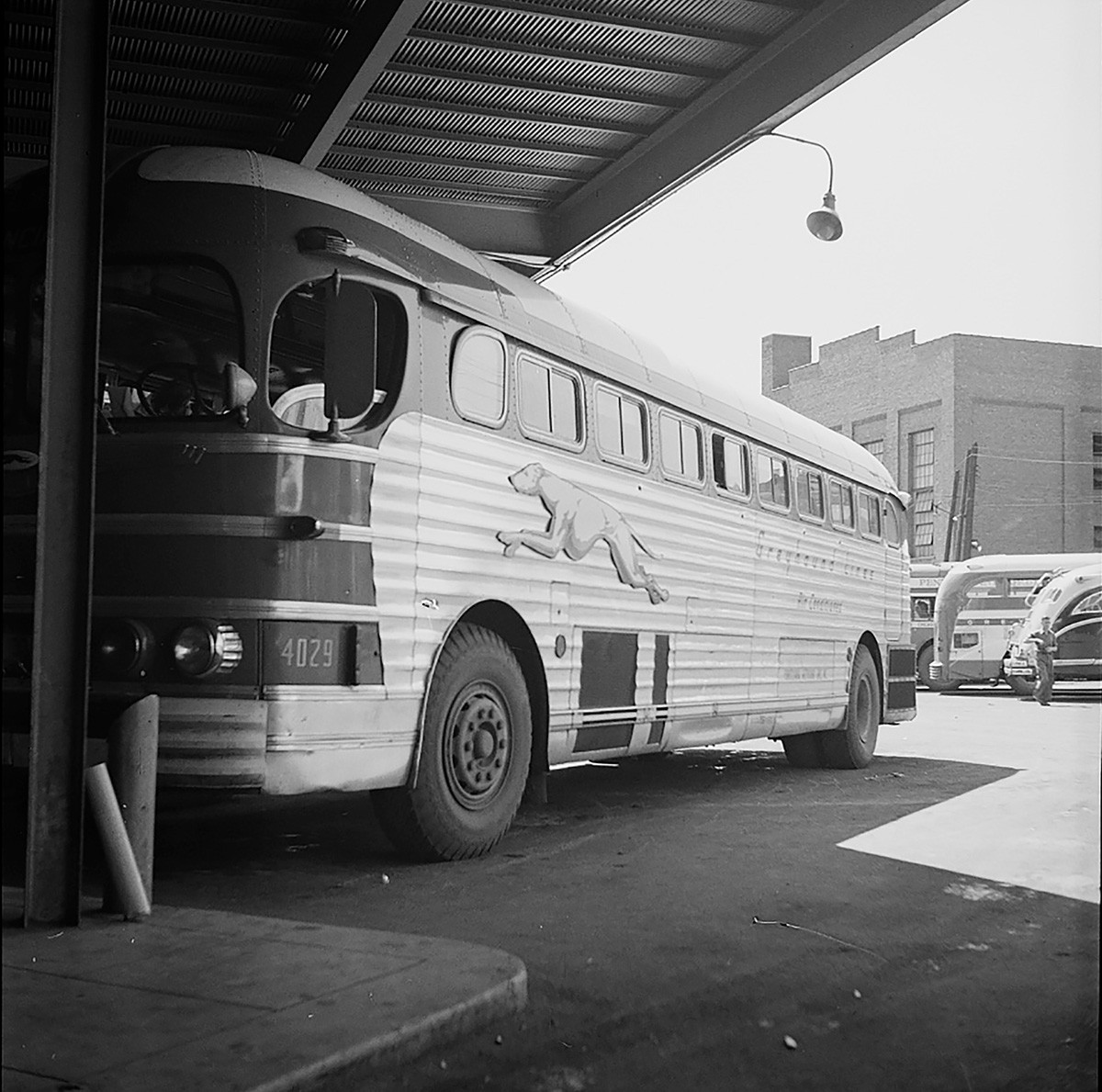
In preservation, we ask buildings questions to inform us about culture. In cultural landscape research, we ask the land questions to inform us about culture. However, as a research method, I will be asking a bus questions to inform how I think about buildings, landscapes, culture, and Black mobility. Additionally, moving objects such as automobiles and buses, serve as alternative devices of investigation as many of the remaining buildings and sites significant to the Black experience in America are constantly threatened by disrepair, climate change, and erasure for the purposes of gentrification and “redevelopment”.
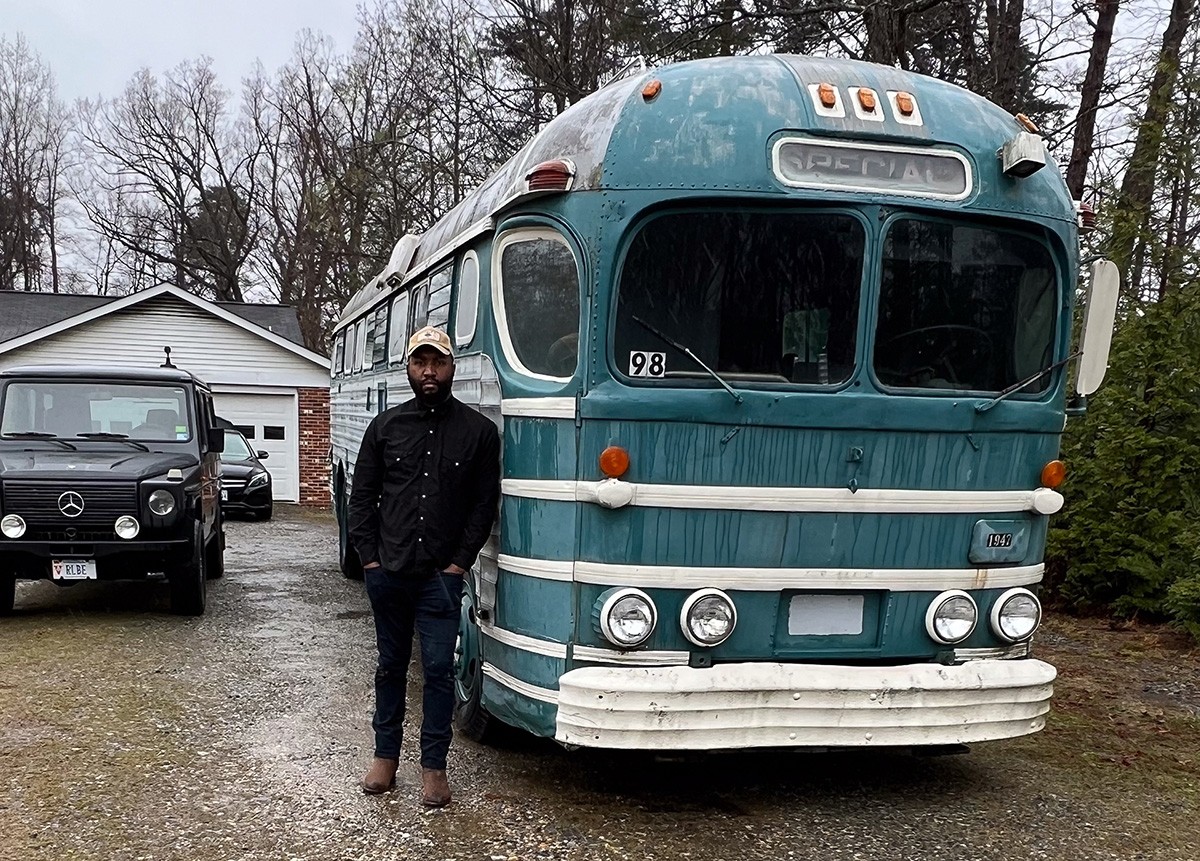
The bus serves as an alternative “vehicle” of inquiry into how regular Black people navigated cultural, social, and physical landscapes. Earlier this year, I purchased a 1947 Greyhound Bus because I wanted to research the Great Migration through a moving object since much of the scholarship around the Great Migration focuses on the destinations and not on the journeys. I wanted to understand what my grandmother’s experience may have been like riding on a segregated bus to an unfamiliar city in the North. Was it loud? Was it warm? Was it comfortable? Was it scary? Figuring out what that “in-between” moment traversing the American landscape was like is important to me. I also wanted to challenge and change how we practice and implement research and pedagogical methods in preservation. Moving objects cannot be designated under the current criteria of the National Register of Historic Places. The National Historic Vehicle Register focuses primarily on America's significant automobiles, meaning it would list the bus Rosa Parks rode on in 1955 (if the Henry Ford Museum did not already have it), but not a bus not associated with a major figure or figures. Vehicles that meet the standards seem to possess a fetishized element therefore, automobiles and buses that tell the stories of regular Black people fall to the wayside.
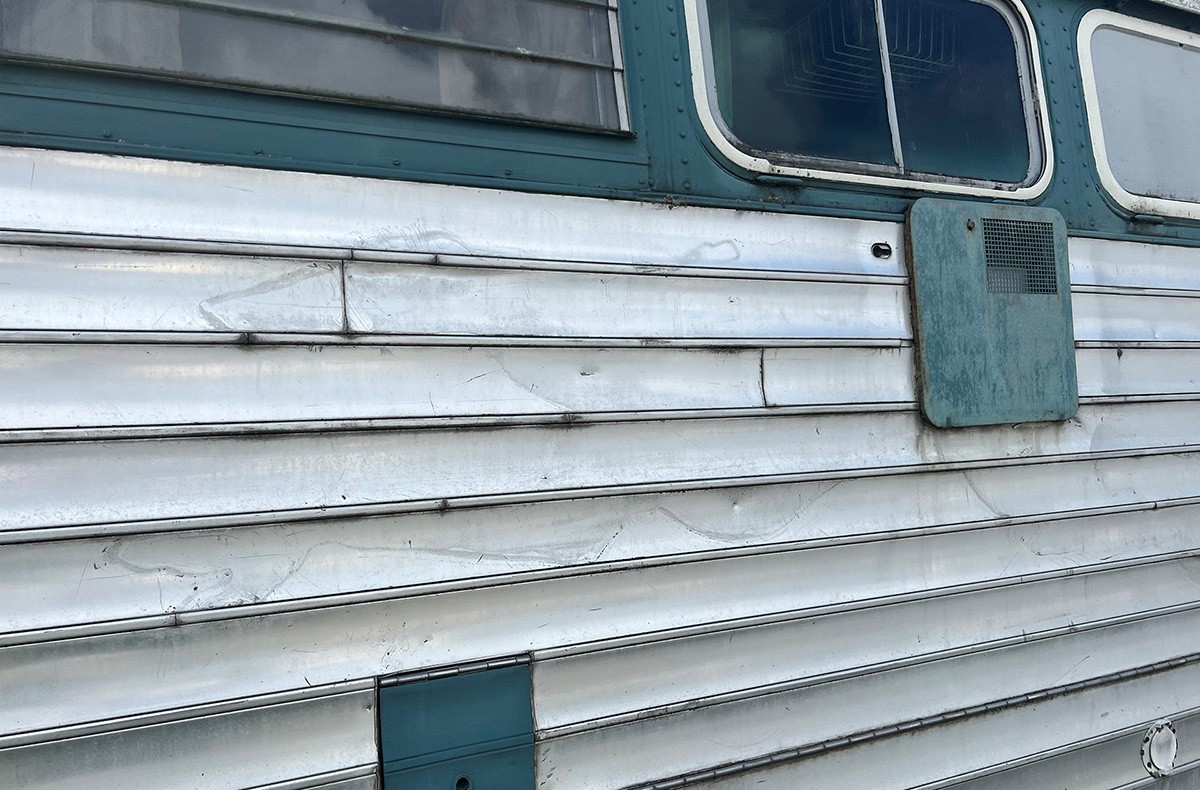
The bus that I purchased was designed by Raymond Loewy who also designed number of the cars featured in The Negro Motorist Green Book. The bus originally operated out of the Great Lakes region of America, making stops in cities including Chicago, Cleveland, Detroit, New York, and Philadelphia; all major destinations for Black southerners during the Great Migration. I am currently in the initial phase of the project, which is a part of my doctoral research in preservation at Columbia University. Before I acquired the bus, it had been converted into a recreational vehicle. I have begun documenting and removing its interior furnishings in order to convert it back into a bus. Luckily the original rear bench where Black passengers were forced to sit during the era of segregation is still intact. The next phase will be to raise funds and foster partnerships to ensure the success of the project. I hope to partner with General Motors and the Detroit Diesel Corporation to convert the bus’ original diesel engine to an electric engine to further the practice of sustainable preservation. Additionally, I hope to partner with Greyhound (now owned by FlixBus) to locate original parts for the bus. Most importantly, I hope to partner with and center members of the Black community who experienced riding Greyhound buses during the era of segregation The goal is to not restore the bus to its original 1947 condition and freeze it in time but to preserve it as a moving object that we can learn from and use in our everyday lives. I hope to also incorporate technology by using augmented and virtual reality so that when visitors board the bus they will be transported to 1947. Visitors will assume the role of a passenger and will have to make a choice of whether to sit in the front or back of the bus. Different scenarios will then play out depending on where they sit. The people portrayed in this augmented and virtual reality will be informed by oral histories, police records, and Ebony and Jet magazine articles about everyday experiences on Greyhound buses during this period. The bus will be a moving exhibition that I hope will be exhibited in art museums as well as history museums.
How have automobiles and/or buses shaped your perspective of the American landscape? Please speak to both the experience of being both “on the bus” and the “borrowed view” of the ever-changing cultural landscape that is visible from the window.
Coming out of architecture school, I think about Robert Venturi and Denise Scott Brown’s approach of viewing architecture and landscapes through the windshields of cars and how the perspective of the viewer shapes everything. Walking, driving, and riding are all unique ways of experiencing the landscape and being Black adds another dimension to that perspective.
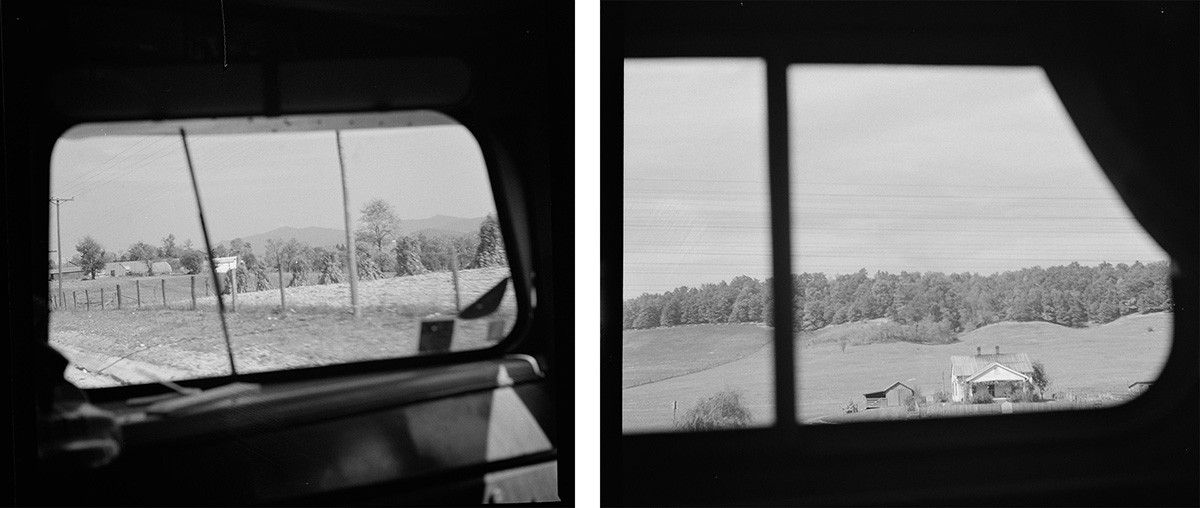
When I was a kid, I lived in Harlem during the school year and went to predominantly white schools on the Upper West Side, which we called “downtown” because it was below 116th Street. Whether I walked, took the subway or city bus, I would see the disparities within New York City’s urban landscape. Invisible lines separated neighborhoods by race, class, and culture. The number of white passengers would dwindle on the way uptown by 110th. The landscape changed after gentrification.
On weekends, my family went to church in the Bronx, went grocery shopping in Yonkers, and visited family Upstate. Summers and holidays were spent in Fredericksburg, the same land my grandmother had left. My childhood was mobile. The songs I listened to on my Sony Walkman cassette player were inspired by the songs that my mom and aunt played in the car and created the soundtrack of my childhood. I recently heard one of those songs, “Tennessee” by Arrested Development and it transported me back in time and space though memory. It reminded me of the moments spent in-between sites, spent in the car with my family navigating the American landscape. I would sit on the left, my grandmother on the right. During long road trips, she would give me cold fried chicken prepared the night prior and wrapped in aluminum foil, bread, and a bottle of water, which was also wrapped in aluminum foil and was too frozen to drink. Once the drowsiness set in, I would curl up under a blanket or sweater and lay on her arm or in her lap and fall asleep to the ambient sounds of the highway, Anita Baker, Janet Jackson, or Arrested Development. Riding through cities, rural and industrial areas, through tolls and tunnels and over bridges, reading signs, license plates, and bumper stickers, and finding gas stations with clean bathrooms. Wondering what tractor trailers were hauling and where they were going. Hearing one of those songs transports me back to my childhood, to the smell of that 1989 Nissan Stanza, the feel of the grey suede seats, leather door panels, and terrible suspension system, the sound the automatic transmission and four-speed, four-cylinder engine would make when the gas pedal was floored, the memories, conversations, laughs, and my vantages of life, architecture, and landscapes from the backseat. Simultaneously, mobility and more specifically the car represented access to other places and opportunities. The highway represented modernity and access, but in many parts of the American landscape, the highway represented displacement.
As its Scholar in Residence, what are the vision and aspirations for Voices Underground?
At Voices Underground, we focus on racial healing through storytelling. One of the stories that we tell is the story of the Underground Railroad. We tell this story through art, lectures, secret suppers, and memorialization. We focus on telling these stories from the freedom seeker’s perspective in order to understand how they viewed and navigated varying landscapes (natural, physical, and social). Our current work focuses on the border of Delaware and Pennsylvania, a landscape defined by an invisible line that once separated states where slavery was legal and illegal. Freedom seekers read natural landscapes and knew what plants were edible and which were medicinal; they used astronomy as GPS; they navigated and adapted to social and cultural landscapes out of survival. The movement of the Underground Railroad is similar to the movement of the Great Migration. The modes of transportation may have been different, but both the Underground Railroad and the Great Migration responded to oppressive cultural, social, and physical landscapes.
You seem to have an enormous comfort zone and a thirst for knowledge surrounding the choreographed movement of African Americans over multiple generations across the American landscape from the Underground Railroad to the Great Migration. How will you measure success for your work?
I hope my work expands the collective discourse, memory, and imagination around Black mobility and its causes and effects. How did landscapes inform these movements? How did these movements inform new landscapes, urbanization, “Chocolate Cities,” and a network of Black communities? How did Greyhound bus routes transport certain cultural traditions and relationships with the land from the South to the North, West, and Midwest? Why do some people in Harlem who migrated from Virginia speak or cook a certain way? Why do some people that live in Chicago who migrated from Mississippi, speak or cook differently? How do we analogize the movement of the Underground Railroad and the Great Migration to patterns of migration today and what does that say about our current cultural, social, and physical landscape? These are some of the questions I hope people will not only ask but find answers to. I also hope my work advances how we practice and implement research and pedagogical methods in preservation to better understand cultural landscapes.
How can our readers support your efforts?
If readers would like to support this work, they can contact me at rle2134@columbia.edu
Banner Photograph by Bern Keating, 1954. Courtesy of Robert Louis Brandon Edwards’ Archival Photograph Collection.



